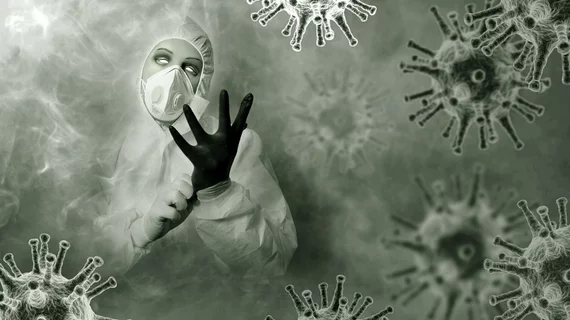AI links COVID-19 to poor sleep, bad dreams
The COVID-19 pandemic is a bad dream in the truest sense of the word—and AI helps to prove it, a team of researchers assert in a study published online Oct. 1 in Frontiers in Psychology.
Anu Katriina Pesonen, head of the Sleep & Mind Research Group at the University of Helsinki and colleagues sought to explore how lockdowns imposed because of COVID-19 lockdown impact the content of people’s dreams and nightmares.
The researchers started by crowdsourcing sleep and stress data during the sixth week of Finland’s COVID-19 lockdown this past winter. A total of 4,275 subjects with a mean age of 43 years old shared assessments of their sleep, and 811 individuals also reported the content of their dreams.
Overall, a majority of patients, 54.2%, reported sleeping substantially more than they typically had pre-pandemic. Many also experienced increased awakenings (28.6%) and nightmares (26%).
The researchers transcribed the content of the dreams from Finnish into English word lists and fed the data into an AI algorithm. Scanning the data for frequently appearing word associations, they identified 33 “dream clusters” as constructed using unsupervised computational network and cluster analysis from what researchers called “smaller dream particles” (rather than entire dreams).
Of these 33 clusters, 20 were characterized as bad dream clusters, 55% of which had pandemic-specific content.
Themes such as failures in social distancing, coronavirus contagion, personal protective equipment, dystopia and apocalypse fell under the pandemic-specific umbrella. For example, word pairs in a dream cluster labeled “disregard of distancing” included mistake-hug, hug-handshake, handshake-restriction, handshake-distancing, distancing-disregard, distancing-crowd, crowd-restriction and crowd-party.
More than half the study participants reported increases in stress levels, which were more closely linked to patterns like fitful sleep and bad dreams. Subjects experiencing the highest degree of stress had more pandemic-specific dreams.
“The results allowed us to speculate that dreaming in extreme circumstances reveals shared visual imagery and memory traces, and in this way, dreams can indicate some form of shared mindscape across individuals,” Pesonen explains in a prepared statement.
She adds that the computational, linguistics-based, AI-assisted analytics used in the study “is really a novel approach in dream research,” and that such research could provide valuable insights for healthcare professionals as they assess the pandemic’s toll on behavioral health.
